
It's here: Our game-changing guide to everyone's favorite room in the house. Your Do-Anything Kitchen gathers the smartest ideas and savviest tricks—from our community, test kitchen, and cooks we love—to help transform your space into its best self.
Grab your copyPopular on Food52
Continue After Advertisement
11 Comments
Herschelian
March 29, 2015
My feeling is that you should address your kitchen 'stuff' much as you would your wardrobe but with a slightly longer time-line.
If you haven't used something for two years (or more) either sell it on ebay, donate it to a charity shop or chuck it out with the rubbish. There are one or two exceptions to this. Hang on to a fish kettle (but store other things inside it), keep a jam pan (if you haven't room for it lend it to someone who will use it,on the proviso you can get it back if you decided to have a marmalade-making spree). If you have gagets which duplicate functions, choose the one you like/use most and get rid of the others. If in doubt - chuck it out! Store things logically and keep a list of what you have and where it is.
As to the edible stuff, fresher the better. Dried herbs and spices become flavourless dust after a relatively short time. Buy the ones you use regularly in small quantities and replace them as and when. No-one needs a shelf full of stuff you might never use . You can tell I was once a librarian, can't you?!
If you haven't used something for two years (or more) either sell it on ebay, donate it to a charity shop or chuck it out with the rubbish. There are one or two exceptions to this. Hang on to a fish kettle (but store other things inside it), keep a jam pan (if you haven't room for it lend it to someone who will use it,on the proviso you can get it back if you decided to have a marmalade-making spree). If you have gagets which duplicate functions, choose the one you like/use most and get rid of the others. If in doubt - chuck it out! Store things logically and keep a list of what you have and where it is.
As to the edible stuff, fresher the better. Dried herbs and spices become flavourless dust after a relatively short time. Buy the ones you use regularly in small quantities and replace them as and when. No-one needs a shelf full of stuff you might never use . You can tell I was once a librarian, can't you?!
Rose M.
April 18, 2015
I've used the one-year concept in my wardrobe for many, many years. And now, thanks to you, I'll extend the practice into my kitchen "not used for two years" and it's gone! Thank you! Thank you!!
Traveler
March 29, 2015
My motivation was a complete redo of my kitchen which meant taking everything out of the cupboards and drawers. The layout remained the same but I had my cupboards and drawers refaced and had new countertops (Caesarstone) installed, among other things. I also had a portable island that I got rid of (it was really in the way in my narrow kitchen). So I actually lost space in the redo. I had a trash compactor which I decided I really didn't need, so that came out and I had slats put in the space for cookie sheets, racks, etc. That space also gave me an extra drawer. I had one drawer converted to a spice drawer with slanted shelves. Spices put in in alphabetical order - so much easier to find what I need. I do keep all red spices in the refrigerator (cayenne, nutmeg, chili powder, etc.). They seem to deteriorate much quicker if left at room temperature (I live at the beach). I transfer all recipes I want to keep to my computer. When I want to use one I email it to myself and use my iPad to read the recipe in the kitchen. I cleaned out a nearby linen closet and put vases, seldom used party supplies, etc. on two of the empty shelves. Big stock pots and turkey roaster went into the garage. Luckily, I have a lot of counter space, so I do keep out those things I really use: Big food processor, small food processor, blender, toaster oven, two crocks of utensils (wooden spoons in one and other utensils in the other), coffee pot, cookbooks, and a few decorative objects. I am still doing some re-arranging, but I am very pleased by how things have worked out.
anamaria R.
March 29, 2015
me facinan sus ideas para la organicacion y orden en toda la casa y en general
LeBec F.
March 24, 2015
I was nodding through your whole piece! Some organizing tips from me:
--I store my heavy stainless bench scraper under my ancient irreplaceable toaster oven.There is a space where it just fits, and the large rolled edge at the top of the handle- is just big enough that it keeps the scraper from disappearing under the appliance.
-- my recipes are printed out and stored in plastic sleeves and stored in folders. I am lazy about putting away used recipes, so i store them flat in an attractive tray/box under my island and then sporadically do a big re-filing.
--to discern between dish washing sponges and clean-up sponges, i snip off a corner of my clean-up sponges.
-- I keep a pretty blue glass jar filled with a weak bleach solution-on the window sill behind one of my sinks . This is where smelly sponges occasionally vacation.
--we have a large garden and we generate a good amunt of compost, so to collect it, we use a blue grey Rubbermaid plastic rectangular bin with lid- on the back of the griddle section of our commercial range.
--All our constantly used cooking utensils are stored on the shelf above our range- upright, in rectangular decorative terra cotta plant pots that we have outfitted with a jury-rigged grid of dividers (like a wine box) to keep the utensils from falling over.
-- all our knives live on magnet bars affixed above a work counter.
I hope some of these might be helpful to other 52ers!
--I store my heavy stainless bench scraper under my ancient irreplaceable toaster oven.There is a space where it just fits, and the large rolled edge at the top of the handle- is just big enough that it keeps the scraper from disappearing under the appliance.
-- my recipes are printed out and stored in plastic sleeves and stored in folders. I am lazy about putting away used recipes, so i store them flat in an attractive tray/box under my island and then sporadically do a big re-filing.
--to discern between dish washing sponges and clean-up sponges, i snip off a corner of my clean-up sponges.
-- I keep a pretty blue glass jar filled with a weak bleach solution-on the window sill behind one of my sinks . This is where smelly sponges occasionally vacation.
--we have a large garden and we generate a good amunt of compost, so to collect it, we use a blue grey Rubbermaid plastic rectangular bin with lid- on the back of the griddle section of our commercial range.
--All our constantly used cooking utensils are stored on the shelf above our range- upright, in rectangular decorative terra cotta plant pots that we have outfitted with a jury-rigged grid of dividers (like a wine box) to keep the utensils from falling over.
-- all our knives live on magnet bars affixed above a work counter.
I hope some of these might be helpful to other 52ers!
Your O.
March 23, 2015
Great advice. My mantra: don't wanna move anything to get to anything. Use the walls. Use hanging rails (IKEA!) and hooks... one utensil, pot or lid per hook My "ah-HA!": use the 1" or so lip on the back of your counter top (at the backsplash) to stand cutting boards. They lean in just enough. I like it so much, I used Command hooks and pretty ribbon to create a "guard rail" for the cutting boards when I realized that I really LIKE my cutting boards on display. And now they don't jump off the ledge when I'm pounding the chicken...!
Tucker &.
March 23, 2015
I swear Alice has been in my kitchen! I recently did a lot of this, and wow, did it make a difference. Very inspiring, and might nudge me to take a second look. Thanks!
Pegeen
March 23, 2015
Great tips and approach - thank you, Alice! Makes so much sense to break it down in the ways you describe. Question for Food52: is the wood caddy for holding cooking tools available in the Provisions shopping section?
Veronica F.
March 23, 2015
Ah- unfortunately not anymore. The walnut utensils holder by onourtable used to be sold in the food52 shop.

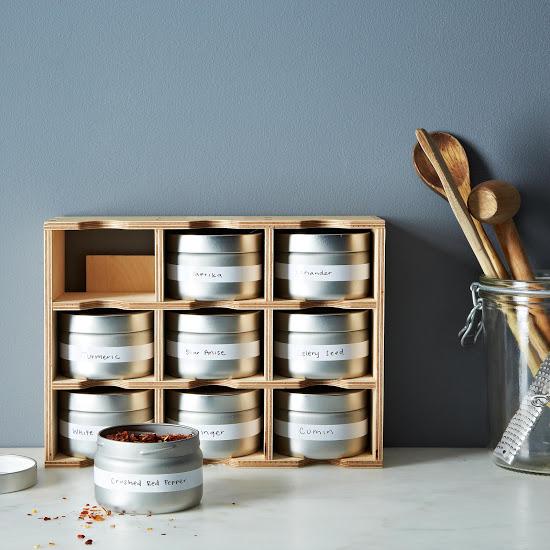
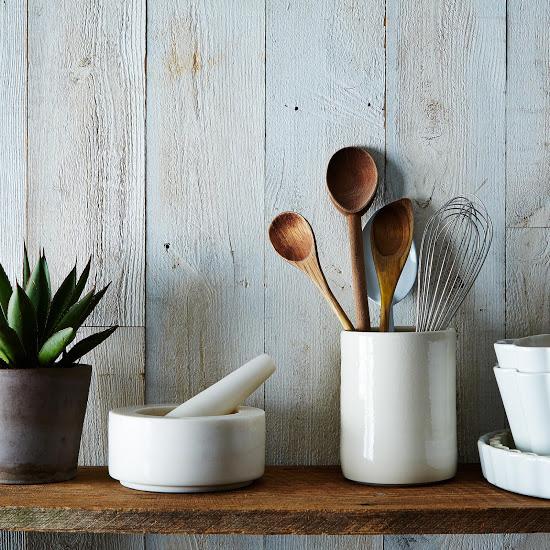
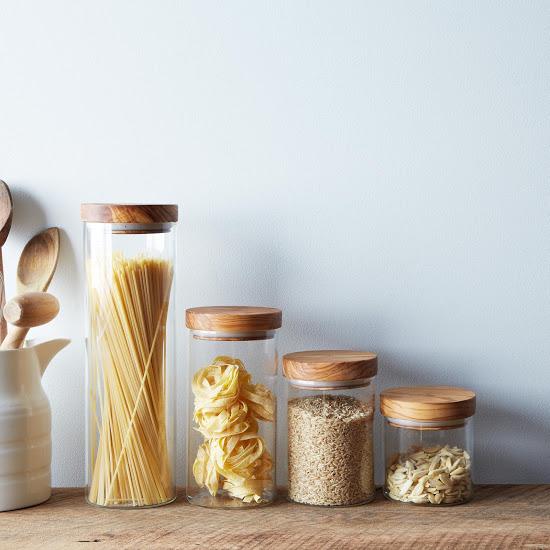
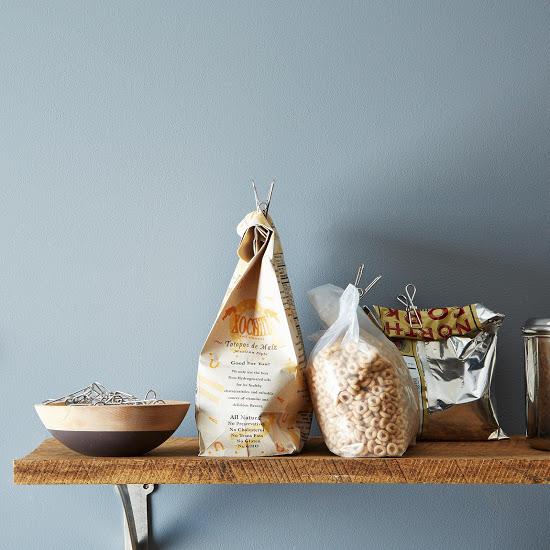
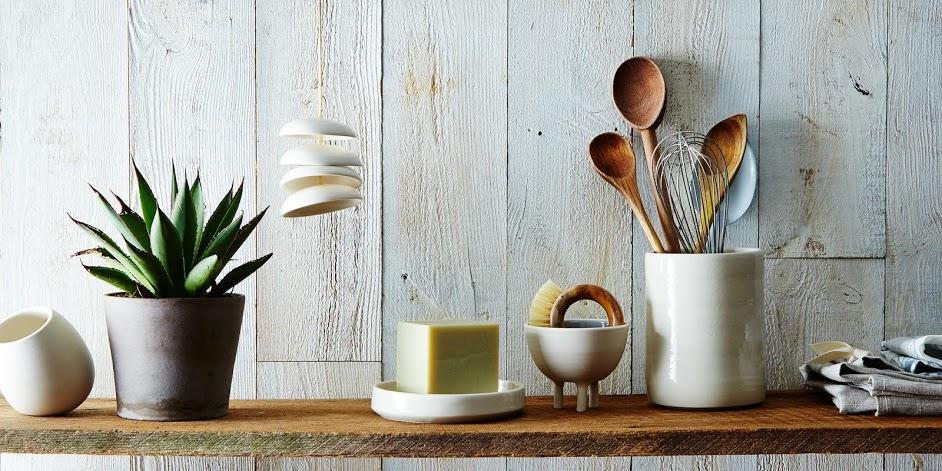

See what other Food52 readers are saying.